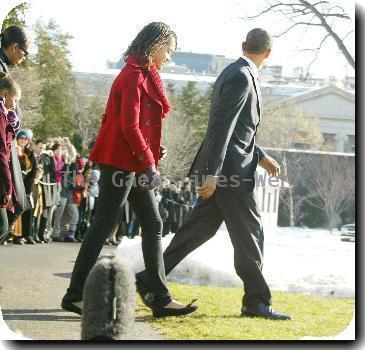Obama sends top chiefs to Gulf Coast to monitor massive spill response as frustration mounts
By Greg Bluestein, APSunday, May 23, 2010
Obama sends top chiefs to monitor spill response
ROBERT, La. — Three top Obama administration officials are returning to the Gulf Coast to monitor the massive oil spill that seems to have no end in sight — the devastation underscored by oil-stained pelicans and their eggs on an island where hundreds of the birds nest.
On Saturday, the pelican colony off Louisiana’s coast was awash in oil. An Associated Press photographer saw several birds and their eggs coated in the ooze. Nests rested in mangroves precariously close to the crude that had washed in. Workers had surrounded the island with oil-absorbing booms, but puddles of oil had seeped through the barrier.
Anger with the government and BP PLC, which leased the rig and is responsible for the cleanup, has boiled over as more wildlife and delicate coastal wetlands are tainted. U.S. Environmental Protection Agency chief Lisa P. Jackson was headed Sunday to Louisiana, where she planned to visit with frustrated residents.
Secretary of the Interior Ken Salazar and Secretary of Homeland Security Janet Napolitano were to lead a Senate delegation to the region on Monday to fly over affected areas and keep an eye on the response.
Meanwhile, the official responsible for the oversight of the month-old spill response said he understands the discontent among residents who want to know what’s next.
“If anybody is frustrated with this response, I would tell them their symptoms are normal, because I’m frustrated, too,” said Coast Guard Commandant Thad Allen. “Nobody likes to have a feeling that you can’t do something about a very big problem.”
President Barack Obama also has named a special independent commission to review what happened. The spill began after the Deepwater Horizon oil rig exploded off the coast of Louisiana on April 20, killing 11 workers, and sank two days later. At least 6 million gallons of crude have spewed into the Gulf of Mexico since, though a growing number of scientists have said they believe it’s more.
The visits from top Obama chiefs come as BP said it will be at least Tuesday before engineers can shoot mud into the blown-out well at the bottom of the Gulf, yet another delay in the effort to stop the oil.
A so-called “top kill” has been tried on land but never 5,000 feet underwater, so scientists and engineers have spent the past week preparing and taking measurements to make sure it will stop the oil that has been spewing into the sea for a month. They originally hoped to try it as early as this weekend.
“It’s taking time to get everything set up,” BP spokesman Tom Mueller said. “They’re taking their time. It’s never been done before. We’ve got to make sure everything is right.”
Crews will shoot heavy mud into a crippled piece of equipment atop the well. Then engineers will direct cement at the well to permanently stop the oil.
BP has tried and failed several times to halt the gusher, but have had some success with a mile-long tube inserted into the leaking pipe that BP said Friday was sucking about 92,400 gallons of oil a day to the surface. The figure is much lower than the 210,000 gallons a day the company said the tube was sucking up just a day before.
BP Chief Operating Officer Doug Suttles said the higher number is the most the tube has been sucking up at any one time, while the lower number is the average.
As the spill spreads deeper into vulnerable marshes, some have called for federal officials to take over the response. But Allen said the government must hold BP accountable. After the 1989 Exxon Valdez tanker spilled 11 million gallons of oil in Alaska, Congress dictated that oil companies be responsible for dealing with major accidents — including paying for all cleanup — with oversight by federal agencies.
BP is also developing several other plans in case the top kill doesn’t work, including an effort to shoot knotted rope, pieces of tire and other material — known as a junk shot — to plug the blowout preventer, which was meant to shut off the oil in case of an accident but did not work.
Associated Press writers Matthew Daly in Washington, Kevin McGill in New Orleans and Associated Press photographer Gerald Herbert in Louisiana contributed to this report.
Online:
globalwarming.house.gov/spillcam
Tags: Accidents, Animals, Barack Obama, Birds, Coastlines And Beaches, Environmental Concerns, Louisiana, North America, Robert, United States

